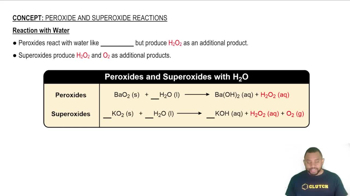Here are the essential concepts you must grasp in order to answer the question correctly.
Reaction Order
The order of a reaction indicates how the rate of the reaction depends on the concentration of reactants. In this case, the reaction is first order in H2O2, meaning that the rate is directly proportional to the concentration of H2O2. This relationship is crucial for calculating the concentration of H2O2 over time and ultimately determining the amount of O2 produced.
Recommended video:
Rate Constant
The rate constant (k) is a proportionality factor in the rate law that relates the rate of a reaction to the concentrations of the reactants. For a first-order reaction, the rate constant is given as 0.00752 s⁻¹ at 20.0 °C. This constant is essential for calculating the change in concentration of H2O2 over time, which is necessary to find the volume of O2 produced.
Recommended video:
Gas Collection Over Water
When collecting gas over water, the total pressure of the gas collected is the sum of the partial pressure of the gas and the vapor pressure of water. In this scenario, the barometric pressure is 742.5 mmHg, and the vapor pressure of water at 20.0 °C is 17.5 mmHg. Understanding this concept is vital for accurately calculating the volume of O2 produced, as it allows for the adjustment of the measured pressure to account for the water vapor.
Recommended video:
 Verified step by step guidance
Verified step by step guidance

